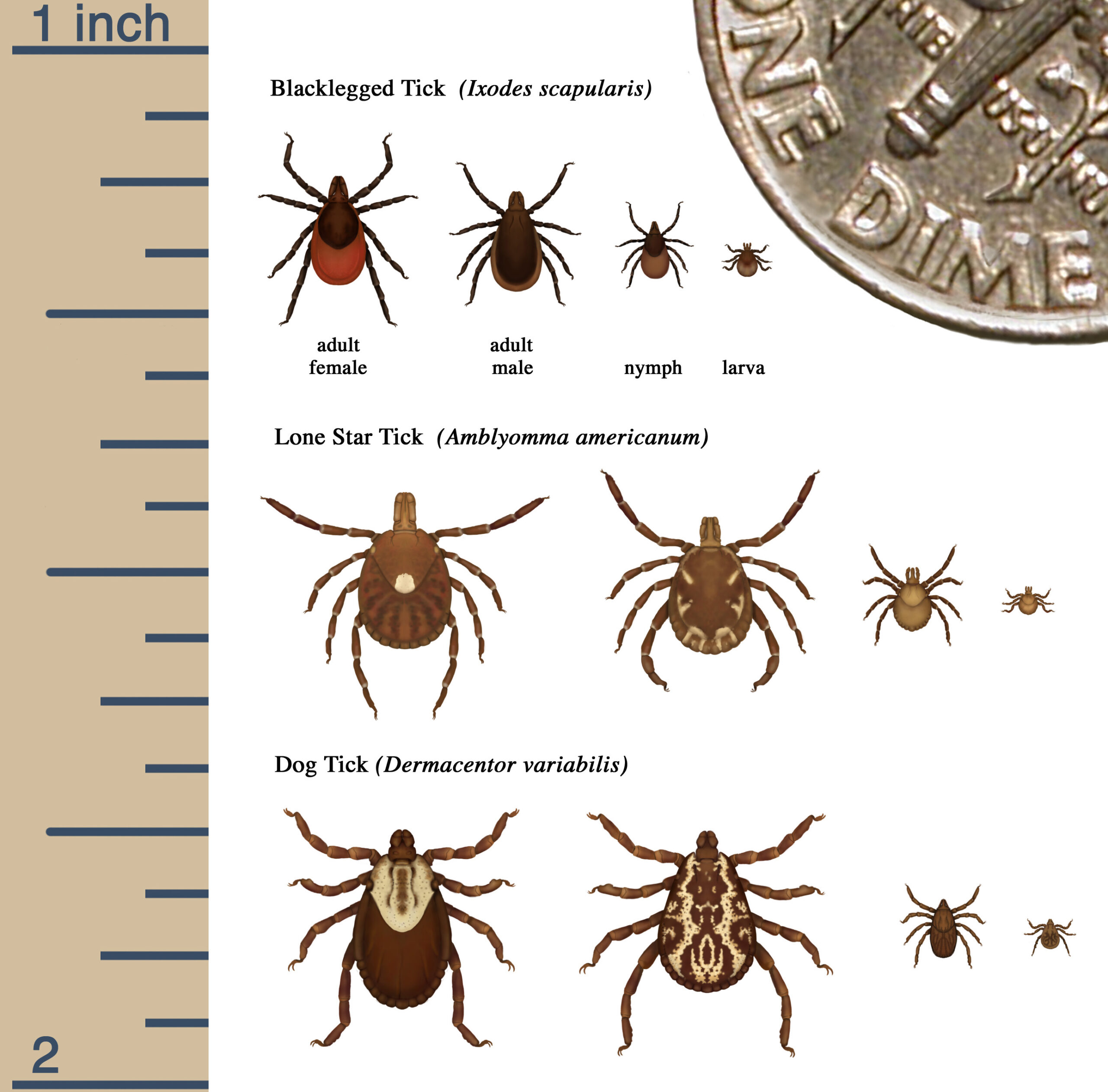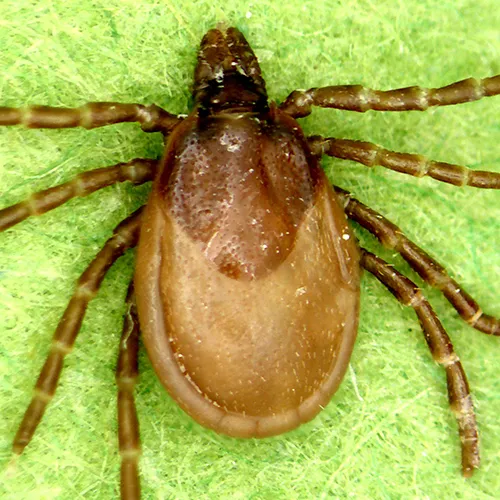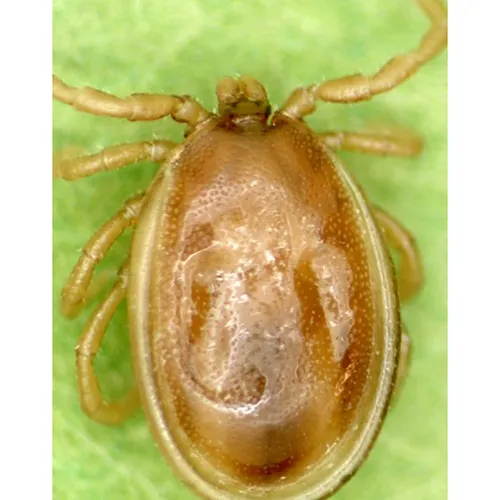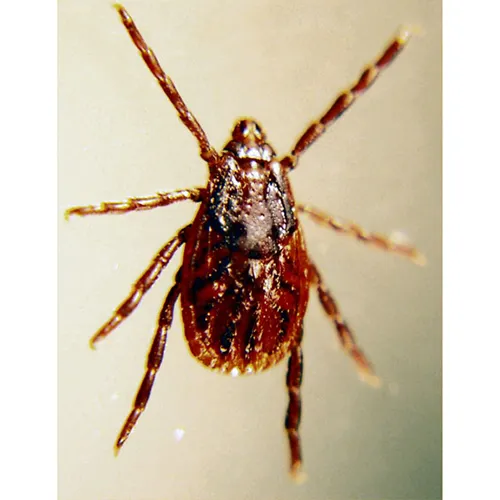Ticks and tick-borne diseases pose a major public health concern in the United States. Ticks are most active in the spring, summer and fall. Some tick species are active in the winter if the temp is above 32 degrees. A tick goes though 4 life stages: egg, larvae, nymph & adult. As larvae, they have 6 legs, while nymphs and adults have 8 legs. After the eggs hatch the tick will need a blood meal in order to molt into it’s next life stage, either animal or human can be the host. The tick sizes will vary depending on the species of tick and stage of life it’s in. Not all tick bites result in illness.
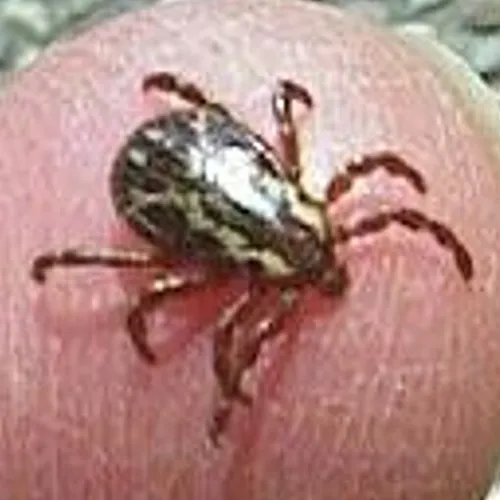
Male American Dog Tick
(Dermacentor Variabilis)
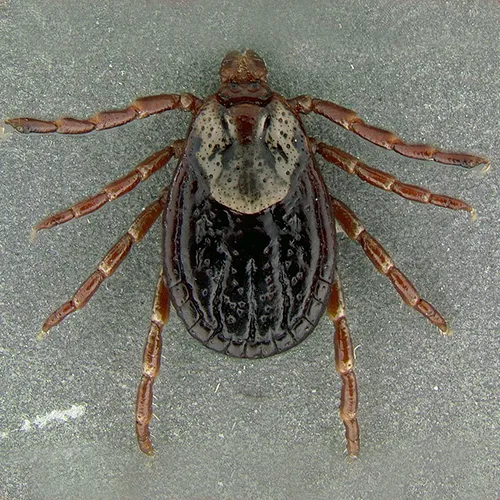
Female American Dog Tick
(Dermacentor Variabilis)
American Dog Tick
American Dog Ticks, also known as Wood Ticks, are brown in color with ornate white markings. They are found throughout the State of Michigan. An American Dog tick can survive for up to two years at any given life stage without a blood meal.
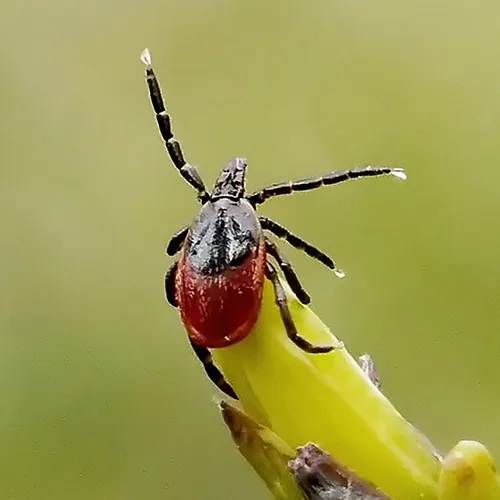
Female Blacklegged Tick
(Ixodes Scapularis)
Photo Credit: Graham Hickling/University of Tennessee, Knoxville.
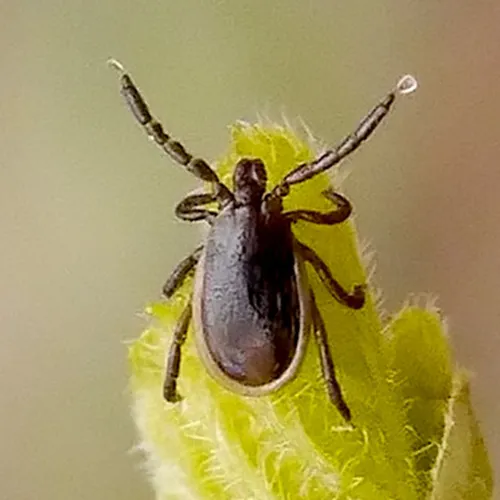
Male Blacklegged Tick
(Ixodes Scapularis)
Photo Credit: Graham Hickling/University of Tennessee, Knoxville.
Blacklegged Tick
Blacklegged Ticks, also known as Deer Ticks, are black and red in color with black legs. Nymphs are extremely small (poppy seed size). They have been found in almost every county in Michigan. Both nymphs and adults are responsible for transmitting diseases. It can take 2 to 3 years to complete it’s life cycle.
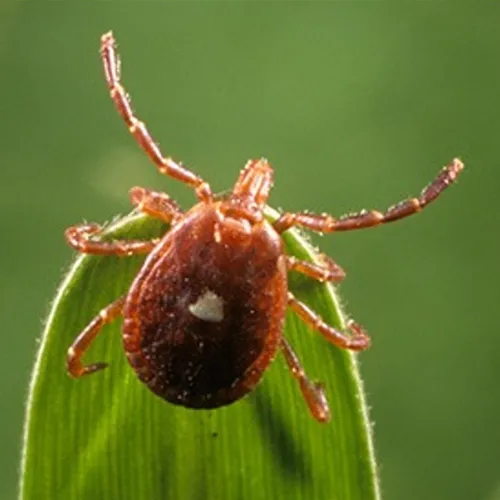
Female Lone Star Tick
(Amblyomma Americanum)

Male Lone Star Tick
(Amblyomma Americanum)
Lone Star Tick
The Lone Star Tick is becoming more established in Michigan. The adult female is distinguished by a white dot or “lone star” in the middle of her brown back with the males having spots or streaks of white pigment around the outer edge of the body. The nymph and adult females most frequently bite humans. They are an aggressive tick and move rather quickly and can take up to 3 years to complete their life cycle.
Woodchuck Tick
Woodchuck Ticks are also known as Groundhog Ticks. They are similar in appearance to Deer Ticks so identification may be necessary to differentiate between the two species. Adult females are tan to reddish-tan color with a darker shield. Larvae and nymphs are a slightly lighter tan color. They typically don’t prefer humans as a host. They are the primary vector for Powassan Virus and can be found around the Great Lakes.
Brown Dog Tick
Brown Dog Ticks, also known as Kennel Ticks, are brown with no distinguishing markings and can be mistaken for other ticks. This type of tick can survive indoors and outdoors and are most often found in dog shelters and dog kennels. They can transmit Canine Babesiosis, Canine Ehrlichiosis, Anaplasma Platys, and Canine Rocky Mountain Spotted Fever.

